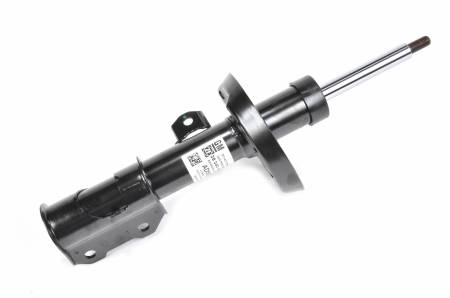Maintenance & Troubleshooting
Signs of Wear & Troubleshooting
- Signs of wear for suspension struts include but are not limited to:
- Vehicle pulls while braking
- Worn suspension components
- Excessive nose dive while braking
- Vehicle has ‘acceleration squat'
- Vehicle does not return to a neutral position
- Vehicle steering pulls
- Strut mount or bearing noise
- It could be time to replace your shocks or struts if, when driving on a surface with bumps and/or dips:
- Your ride is harsh, bumpy or shaky
- Your vehicle bounces excessively
- Your vehicle leans or sways while turning
- Your vehicle bottoms out
- Uneven patches of wear on the edges of your tire can be a sign of weak ride control (shocks or struts). This wear, called cupping, appears as scalloped dips around the surface of the tread. Other signs it could be time to replace your shocks or struts include but are not limited to:
- You notice fluid leakage from your vehicle's shocks or struts
- Your vehicle's shocks or struts have dented or heavily scratched housings or mounts
Good Maintenance Practices
- Your vehicle's struts slowly deteriorate over time, though this wear is normally difficult to detect. To maximize your vehicle's ride comfort, it is recommended to inspect your vehicle's struts every year. Worn struts can also cause additional wear to other vehicle components. Potential affected components may include:
- Brakes
- Ball joints
- Tires
- Stabilizer bar
- Stabilizer links
- To inspect your struts to gauge wear, check for:
- Leaking oil or wetness along the body of the shock or strut
- Broken mounts
- Broken, damaged, or missing mounting hardware
- Severely dented reservoir tube
- Bent or scratched piston rod
- Cupped tire wear
- Damaged spring seat, spring, and spring isolator
- Damaged strut bearing

 WARNING: Cancer & Reproductive Harm -
WARNING: Cancer & Reproductive Harm -
Write the First Review!